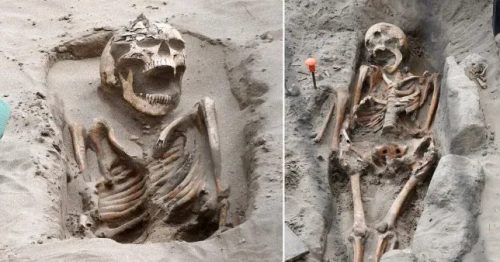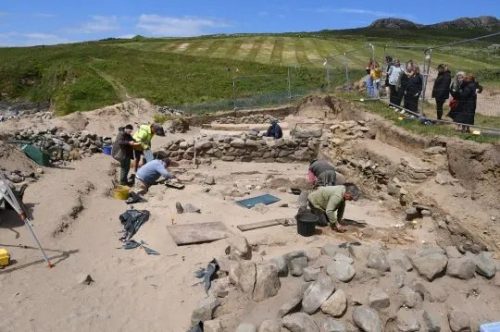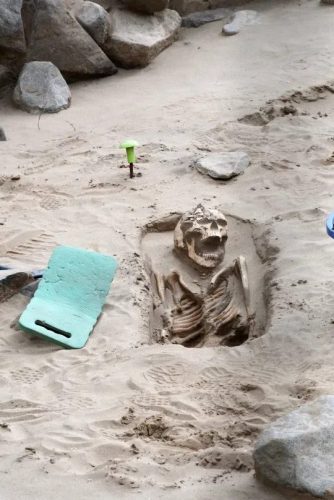
In a remarkable archaeological discovery, approximately 200 well-preserved skeletons dating back to the 6th century were found on a beach in Pembrokeshire, Wales.
This extraordinary find has unveiled a medieval burial site hidden beneath the sands for over a millennium, shedding light on the intriguing history of the region.
Archaeologists have worked diligently to uncover the secrets held within this burial ground, and their findings provide valuable insights into the ancient Christian community that once inhabited these shores.
The Medieval Burial Site:
The burial site, nestled on a beach in Pembrokeshire, is believed to be a medieval burial ground associated with the early Christian traditions. It has remained hidden for more than 1,000 years, shielded by coastal sand dunes and natural erosion.

The location of the site is significant, as it aligns with the westward-facing orientation typically observed in Christian burial traditions.
The graves found in this area are carefully arranged, with the deceased positioned facing westward, a practice consistent with Christian burial customs.
This alignment suggests a strong connection to the early Christian community in the region.
Archaeological Discoveries:
Archaeologists have meticulously excavated the site, revealing the remains of men, women, and children from various age groups. Some of the skeletons were found in stone-lined graves, following a common burial practice in medieval times.

These graves were characterized by stone slabs used to create a secure resting place for the deceased.
Intriguingly, some of the skeletons were found in “cists,” which are graves lined with stones and capped with stone slabs. This burial method was consistent with the burial practices of medieval times in western Britain. The meticulous care taken in interring the deceased reflects the reverence and respect for the departed within the early Christian community.
Significance of the Discovery:
The discovery of this medieval burial site offers a unique window into the lives and customs of an ancient Christian community in Wales. The careful alignment of the graves and the use of stone-lined and capped cists point to a community that held strong religious beliefs and traditions.
Moreover, the location of the site, facing the west, symbolizes the Christian belief in the resurrection and the hope for an eternal life in the presence of God.

This find highlights the historical and cultural significance of the early Christian community in Wales and their profound impact on the region’s history.
Conclusion:
The unearthing of the 6th-century skeletons on a Welsh beach is a testament to the rich history and heritage of the region.
This archaeological discovery provides valuable insights into the burial practices, religious beliefs, and customs of an early Christian community that once thrived on these shores.
As archaeologists continue to study and analyze the remains, we can expect to learn more about the lives of the people buried here and the role they played in shaping the history of Wales.
This remarkable find reminds us of the enduring connection between the past and the present, as we uncover and celebrate the mysteries of our shared history.






